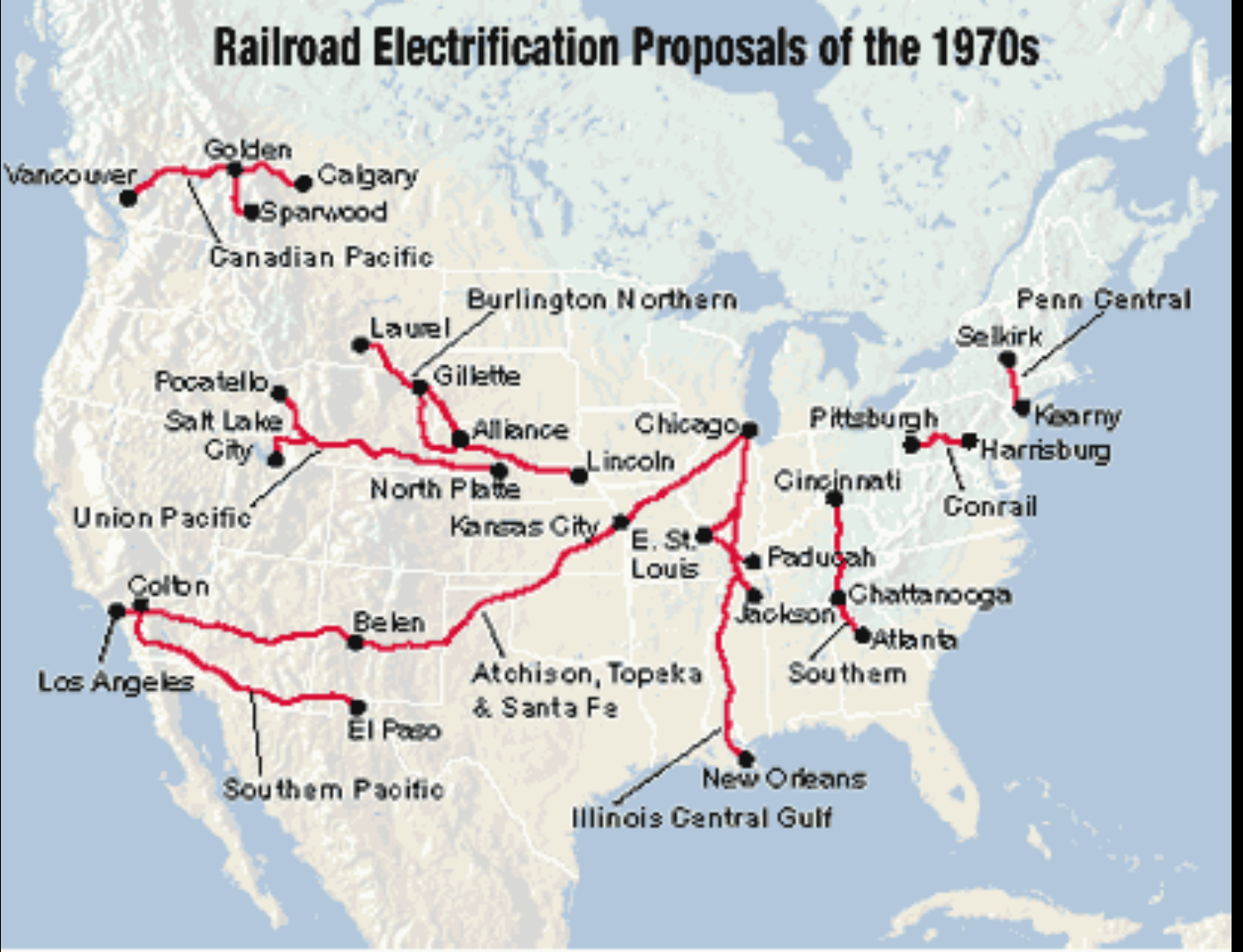Orlen rozpoczął testy lokomotywy napędzanej wodorem, kupionej od Pesy. To pierwszy taki pojazd w Polsce. Do 20230 roku paliwowy gigant planuje przeznaczyć 7,4 mld zł na inwestycje w technologie oparte na odnawialnych źródłach energii.
First hydrogen locomotive started working in Poland.
It’s worth the time and effort in a city, and even between two large cities that are relatively close to each other. Sadly, building and maintaining the system isn’t cheap, so we don’t do it in more remote locations.
Hydrogen technology is still in its infancy, so economies of scale aren’t helping very muc at this point. On top of that, the storage options are far from ideal, and not all hydrogen is green. Currently there are many obstacels, but hopefully hydrogen will find its place in the future.
The Milwaukee Road operated a 2,300 mile electrified line through the heart of the Rocky mountains. There’s also the 5,000 mile trans-siberian railway which is electrified
There have been various proposals for electrifying thousands of miles of track since the 70s
It’s true. Electrified rail lines do exist in a many places, but not quite everywhere. Since there are also non-electric lines, there’s also a time and a place for non-electric locomotives.
A line crossing the Rockys can hardly be considered remote, (at least in an integrated system) it should get tons and tons of through-traffic. It’s not about where the line is but what it connects.
A line can be way less remote, say just ten kilometres from a million inhabitant metropolis, but still see very limited traffic as the area is rural, and only have hourly passenger service and nothing else, maybe a couple of grain wagons in harvesting season and electrifying it would not amortise in a century or ever (because increased maintenance costs). Completely different situation to having through-traffic 24/7 bumper to bumper somewhere at the arse of the world.
If the government has full monopoly on everything rail related, then connecting two places becomes a political question. It may not make economic sense, but in the big picture of an entire country and its internal politics it might be a sensible thing to do regardless.
It’s worth the time and effort in a city, and even between two large cities that are relatively close to each other. Sadly, building and maintaining the system isn’t cheap, so we don’t do it in more remote locations.
Its not that expensive in especially comparison to the entire hustle with Hydrogen…
Hydrogen technology is still in its infancy, so economies of scale aren’t helping very muc at this point. On top of that, the storage options are far from ideal, and not all hydrogen is green. Currently there are many obstacels, but hopefully hydrogen will find its place in the future.
A very idiotic statement.
The Milwaukee Road operated a 2,300 mile electrified line through the heart of the Rocky mountains. There’s also the 5,000 mile trans-siberian railway which is electrified
There have been various proposals for electrifying thousands of miles of track since the 70s
It’s true. Electrified rail lines do exist in a many places, but not quite everywhere. Since there are also non-electric lines, there’s also a time and a place for non-electric locomotives.
Yeah. It’s just that distance and remoteness aren’t good excuses to avoid overhead electrification
A line crossing the Rockys can hardly be considered remote, (at least in an integrated system) it should get tons and tons of through-traffic. It’s not about where the line is but what it connects.
A line can be way less remote, say just ten kilometres from a million inhabitant metropolis, but still see very limited traffic as the area is rural, and only have hourly passenger service and nothing else, maybe a couple of grain wagons in harvesting season and electrifying it would not amortise in a century or ever (because increased maintenance costs). Completely different situation to having through-traffic 24/7 bumper to bumper somewhere at the arse of the world.
If the government has full monopoly on everything rail related, then connecting two places becomes a political question. It may not make economic sense, but in the big picture of an entire country and its internal politics it might be a sensible thing to do regardless.
Caucasus was electrified first in Soviet Union
Distance doesn’t matter as long as the line connects two places that are important in the big picture.
deleted by creator